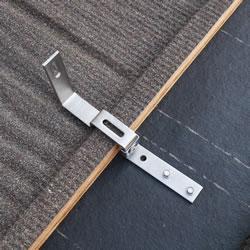While not perfect, solar provides jobs and lease revenue for tribes as it cleans up their air.
American Indians Making $$ on Solar in West
David Brands | Solar Power Consultant
The Energy Policy Act of 1992 opened development of renewable energy projects on American Indian reservations. Since then wind and solar projects have provided power to pump water and electrify homes of Native Americans both on and off the grid. While not perfect, solar provides jobs and lease revenue for tribes as it cleans up their air.
The 2010 Census lists 334 American Indian and Alaska Native reservations with 565 federally-registered tribes living on or off reservations. The 56.2 million acres of reservations which lie mostly west of the Mississippi however many states have them. This is about 4% of the U.S. landmass which is significant because it was determined some years ago that if just 1% of U.S. land was covered with solar panels, it would meet America's electricity demand.
The Obama Administration's all-of-the-above approach to energy development has allowed tribes to make their reservations available to large-scale solar projects. The first such project started in June when Sec of Interior Ken Salazar approved the 350-megawatt (MW) solar project on land of the Moapa Band of Paiute Indians northeast of Las Vegas, NV. Building in three stages of 100-150MW each 2000 acres, the project will generate lease payments, jobs and clean energy to improve the tribe's overall economy. Power will be used in the immediate area but most is being bought by Los Angeles Dept of Water & Power in a 25-year deal.
California, Washington, Nevada, Arizona, Utah, New Mexico and Oklahoma--seeing rapid population growth as the country moves West--have the most reservations in number and land mass. Reservation solar development could provide an answer to distributed energy throughout those states.
The fast-track of solar on reservations is not without its pitfalls, however. In 2011, tribes have filed suit against the federal government for installing solar near abondoned villages, Native drawings and other cultural landmarks (see http://www.reznetnews.org/node/103). The afore-mentioned Moapa solar project has required the relocation of 157 desert tortoises, a threatened species of the area, after ten died of predation and heat exhaustion as they fled the site of the solar array.
The BIA and BLM have both insisted that the concerns of Indians have been carefully considered. The Moapa solar project must also be measured against the antiquated, coal-burning Reid-Gardner Generating Station it is replacing. Asthma, lung disease, heart disease and cancer have plagued the community for decades, ills the Moapas blame on pollution from the Reid Gardner plant (see http://goo.gl/q0wwAZ).As for disrupting the native habitats of endangered species, more due diligence in environmental impact studies are forthcoming.
One band of the Kumeyaay Nation east of San Diego has looked into solar as a revenue generator in lieu of a third Indian casino in five-mile radius. Instead they completed an agreement with San Diego Gas & Electric to lease land for more high-producing wind turbines.
The content & opinions in this article are the author’s and do not necessarily represent the views of AltEnergyMag
Comments (0)
This post does not have any comments. Be the first to leave a comment below.
Featured Product

